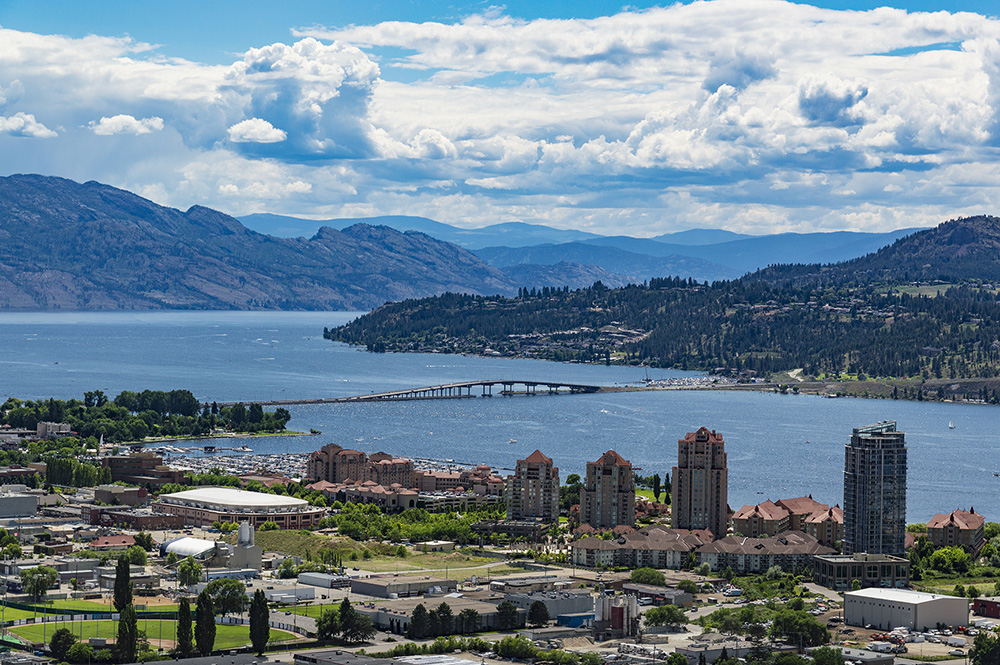
Early Life and Early Career
William Andrew Cecil (W.A.C.) Bennett was born on a farm in Hastings, New Brunswick on 6 September 1900, one of five children of Andrew Havelock and Emma Bennett. The family was poor. Known as “Cece” by friends, Bennett left school after Grade 9 but later took correspondence courses.
He joined the Royal Canadian Air Force at age 17 but the First World War ended before Bennett could be called up. In 1919, he followed his father, a veteran back from the war, to Alberta where they tried homesteading in the Peace River district. Bennett tired of farming and instead got a job in an Edmonton hardware store. He taught Sunday School to Chinese immigrants and was active in his community youth group — where he met Annie Elizabeth May Richards, whom he married in 1927.
In 1930, as the Great Depression was underway, Bennett, his wife and their two children moved to British Columbia — first to Victoria and then Kelowna. A third child, Bill Bennett, would be born in 1932.
At age 29, Bennett bought a Kelowna hardware store which became successful. A natural entrepreneur, he went on to establish a chain of five hardware stores. Although he was a teetotaler all his life, Bennett became one of the partners in what is now Calona Vineyards in the Okanagan, the oldest operating vintner in the province.

Provincial Politics
Having had an interest in politics since growing up in New Brunswick, Bennett entered BC politics was elected a Conservative member of the legislature (MLA) for Okanagan in 1941. He twice failed in bids to lead the Conservatives and in 1951 crossed the floor of the legislature in Victoria to sit as an independent.
He then joined the Social Credit Party, won his seat in the June 1952 provincial election, and was subsequently chosen caucus leader. The “Socreds” — a long-time force in Alberta, but only an emerging power in BC — had made a surprising breakthrough in the BC election by winning a minority government. The lieutenant-governor called Bennett to form a government on 1 August 1952, making him the province's 25th premier.
Premier
Bennett was not a social credit fundamentalist, but instead pursued conservative fiscal policies while aggressively developing the province’s energy, transport and other infrastructure. During two decades of economic prosperity, Bennett's administration oversaw the construction and improvement of highways, major hydroelectric projects on the Peace and Columbia rivers, and the northern extensions of the Pacific Great Eastern Railway (PGE), which was unfinished when Bennett became premier. The railway figured prominently in his goal for developing northern BC. “Of all the interests I have in public life, none is a greater challenge . . . no money in this province could pay me for the satisfaction (I would feel) if this railway were changed from a joke and put on a sound financial basis,” he said.
Although Bennett espoused free enterprise, he took over the Black Ball ferry line and created the BC Ferry Corporation in 1958. His government also expropriated the province's largest privately-owned hydroelectric firm, creating BC Hydro in 1962. And he attempted to establish the Bank of British Columbia with 25 per cent provincial ownership.
From 1953 on, Bennett acted as his own finance minister. Following a "pay as you go" policy that tracked government spending — and that also transferred debts to government agencies such as the Toll Highway and Bridge Authority — Bennett was able to claim in 1959 that the province was debt free.
His administration also curbed the power of labour unions, limited social-welfare spending, kept the civil service trim, and expanded post-secondary educational facilities.
Provincial-Federal Relations
Bennett proclaimed himself a Canadian, but had prolonged disputes with the federal government throughout his time in office. He locked horns with Ottawa over the Columbia River Treaty, tax sharing, and constitutional reform.
However, he also supported the creation of a national health insurance system. “The proposals of Canada for health insurance embodying medical, hospital, dental and pharmaceutical services [are] a major and integral part of an effective social security program for the people of Canada...,” he said at a 1955 federal–provincial conference.
Political Longevity
Bennett won an extraordinary seven straight elections — in 1952, 1953, 1956, 1960, 1963, 1966, and 1969, and remains the longest serving premier in BC history. Supporters and enemies both called W.A.C. by the nickname “Wacky.” But as BC journalist Peter Murray noted, he was politically savvy and “Wacky like a fox."
In August 1972, after 20 years of Social Credit government — and following a lacklustre campaign by an unusually disengaged Bennett — BC voters elected the New Democrats under Dave Barrett. Bennett resigned as MLA and leader of the Social Credit Party in 1973. He was succeeded as Socred leader by his son Bill Bennett, who himself became premier in 1975.
Memory
W.A.C. Bennett was made an officer of the Order of Canada in 1976. He died on 23 February 1979 in Kelowna, and is buried at Kelowna Memorial Park Cemetery. “He dedicated his life to the people of British Columbia,” his tombstone says.
In 1998 a Canada Post stamp was created in his honour. The W.A.C. Bennett Library at Simon Fraser University in Burnaby, BC also sports his name, as does the 186-metre high W.A.C. Bennett Dam in Hudson’s Hope, BC.
In 2016, an exhibit opened in the W.A.C. Bennett Dam Visitor Centre that acknowledged the negative impact the province's largest hydroelectric facility has had on Indigenous communities in the area.

 Share on Facebook
Share on Facebook Share on X
Share on X Share by Email
Share by Email Share on Google Classroom
Share on Google Classroom


